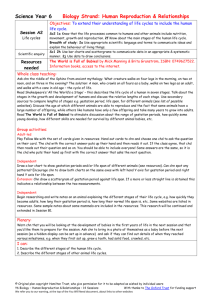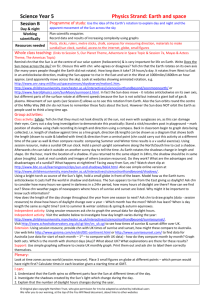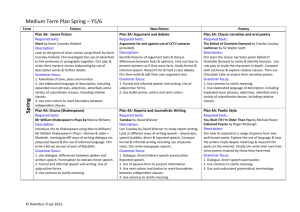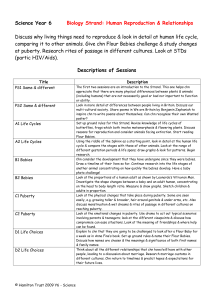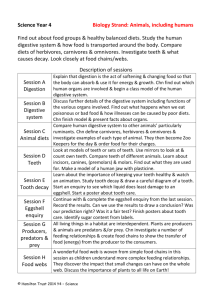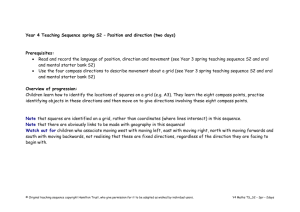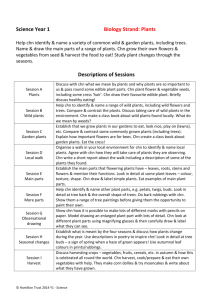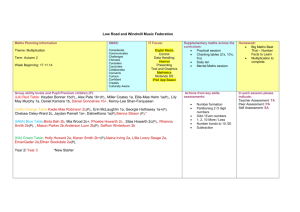Session A - Hamilton Trust
advertisement
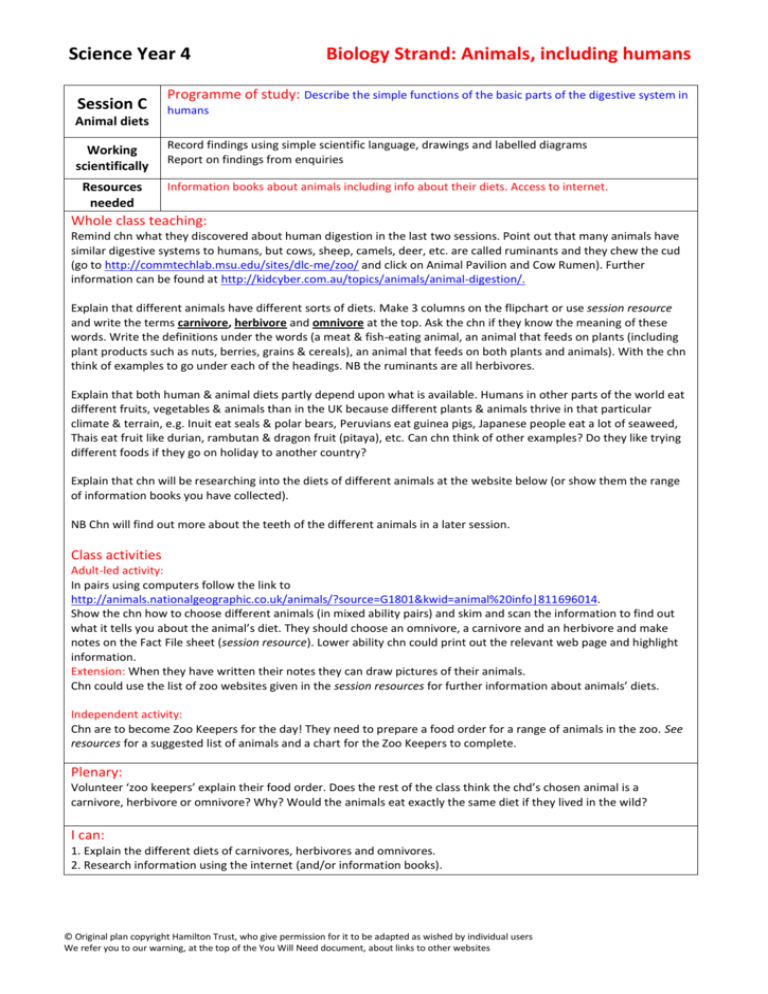
Science Year 4 Session C Animal diets Working scientifically Resources needed Biology Strand: Animals, including humans Programme of study: Describe the simple functions of the basic parts of the digestive system in humans Record findings using simple scientific language, drawings and labelled diagrams Report on findings from enquiries Information books about animals including info about their diets. Access to internet. Whole class teaching: Remind chn what they discovered about human digestion in the last two sessions. Point out that many animals have similar digestive systems to humans, but cows, sheep, camels, deer, etc. are called ruminants and they chew the cud (go to http://commtechlab.msu.edu/sites/dlc-me/zoo/ and click on Animal Pavilion and Cow Rumen). Further information can be found at http://kidcyber.com.au/topics/animals/animal-digestion/. Explain that different animals have different sorts of diets. Make 3 columns on the flipchart or use session resource and write the terms carnivore, herbivore and omnivore at the top. Ask the chn if they know the meaning of these words. Write the definitions under the words (a meat & fish-eating animal, an animal that feeds on plants (including plant products such as nuts, berries, grains & cereals), an animal that feeds on both plants and animals). With the chn think of examples to go under each of the headings. NB the ruminants are all herbivores. Explain that both human & animal diets partly depend upon what is available. Humans in other parts of the world eat different fruits, vegetables & animals than in the UK because different plants & animals thrive in that particular climate & terrain, e.g. Inuit eat seals & polar bears, Peruvians eat guinea pigs, Japanese people eat a lot of seaweed, Thais eat fruit like durian, rambutan & dragon fruit (pitaya), etc. Can chn think of other examples? Do they like trying different foods if they go on holiday to another country? Explain that chn will be researching into the diets of different animals at the website below (or show them the range of information books you have collected). NB Chn will find out more about the teeth of the different animals in a later session. Class activities Adult-led activity: In pairs using computers follow the link to http://animals.nationalgeographic.co.uk/animals/?source=G1801&kwid=animal%20info|811696014. Show the chn how to choose different animals (in mixed ability pairs) and skim and scan the information to find out what it tells you about the animal’s diet. They should choose an omnivore, a carnivore and an herbivore and make notes on the Fact File sheet (session resource). Lower ability chn could print out the relevant web page and highlight information. Extension: When they have written their notes they can draw pictures of their animals. Chn could use the list of zoo websites given in the session resources for further information about animals’ diets. Independent activity: Chn are to become Zoo Keepers for the day! They need to prepare a food order for a range of animals in the zoo. See resources for a suggested list of animals and a chart for the Zoo Keepers to complete. Plenary: Volunteer ‘zoo keepers’ explain their food order. Does the rest of the class think the chd’s chosen animal is a carnivore, herbivore or omnivore? Why? Would the animals eat exactly the same diet if they lived in the wild? I can: 1. Explain the different diets of carnivores, herbivores and omnivores. 2. Research information using the internet (and/or information books). © Original plan copyright Hamilton Trust, who give permission for it to be adapted as wished by individual users We refer you to our warning, at the top of the You Will Need document, about links to other websites




